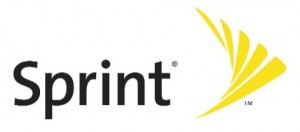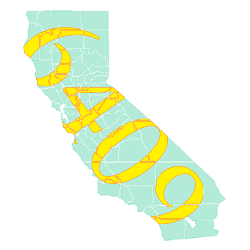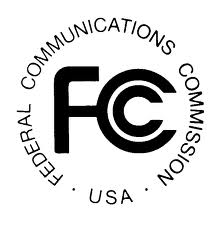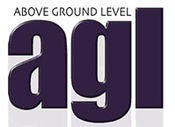Assembly Bill 162, The Wireless Collocation Bill, Amended by its Author –
BILL IS NOW FAR WORSE FOR THE PUBLIC AND LOCAL GOVERNMENTS
[Updated 4/24/13 7:28 p.m. – Added link to PDF version of this analysis. See link at bottom of this page]
As a reminder, on March 21, 2013, Assembly Bill 162 was dropped into the hopper in Sacramento to impose severe new rules requiring mandatory and lightning fast wireless collocation approvals or defaults by California local governments. Assembly Member Holden is the Bill’s sponsor.
Yesterday, Assembly Member Holden amended AB 162 to facially address some of the concerns raised by local governments. The proposed changes, however, are largely cosmetic and in most cases legally ineffective as to actually addressing local government concerns, as I will discuss in detail below. That said, Mr. Holden also took the opportunity to go beyond the cosmetic changes by introducing new language to his Bill that would actually extend the impact of the proposed state legislation far beyond that intended by the federal legislation, Section 6409(a) of the Middle Class Tax Relief Act of 2012.
To view the past and current versions of the bill, visit http://tinyurl.com/wireless162.
Here is my analysis [1] of each of yesterday’s amendments to AB 162:
1. Added a new section readjusting the numbering of the subsequent sections. The new Section 1 provides a legislative purpose and intent for the Bill:
SECTION 1. The Legislature hereby finds and declares all of the following:
(a) Nearly one in every three Californians communicates only via a cellular device and does not own or operate a landline telephone.
(b) Of the 240,000,000 calls to telephone number 911 for emergency assistance placed nationwide each year, 70 percent now originate from cellular devices.
(c) In 2010, 5 percent of all 911 calls originating from cellular devices were dropped, resulting in 8,400,000 dropped 911 calls.
(d) Recognizing the public’s shift toward cellular telephone use, the Legislature passed Senate Bill 1375 (Chapter 332 of the Statutes of 2010), authorizing telephone corporations to deactivate 911 emergency service from any landline telephone not subscribing to paid telephone service.
(e) Given the increased reliance on cellular phones, maintaining signal strength and call reliability for 911 calls from cellular telephones is critical to protecting public safety and saving lives of Californians.
(f) The Final Report of the National Commission on Terrorist Attacks Upon the United States (known as the 9/11 Commission Report) identified the lack of coordination among first responder agencies and communication challenges in the 9/11 attacks and emphasized the need for uniform and reliable communications for all first responders.
(g) The federal Middle Class Tax Relief and Job Creation Act of 2012 (Public Law 112-96) creates a framework for the public sector to partner with commercial providers to leverage the private sector’s investments in broadband technologies to efficiently deploy an interoperable broadband network for public safety.
(h) The federal Middle Class Tax Relief and Job Creation Act of 2012 (Public Law 112-96) allocated seven billion dollars ($7,000,000,000) for grants to states to build the nationwide public safety broadband network.
(i) The Federal Communications Commission has found that delays by local governments in approving ministerial requests have delayed the implementation of next-generation broadband services for consumers and first responders.
(j) It is the intent of the Legislature to increase network capacity on existing wireless structures in order to serve the needs of safety personnel and the people of the state.
AB 162 now seems to also benefit public safety services, but as will be discussed below, the benefit is illusory.
2. Section 2(a) of the bill has been amended to read,
Notwithstanding any other law, and pursuant to Section 6409 of the federal Middle Class Tax Relief and Job Creation Act of 2012 (47 U.S.C. Sec. 1455), a local government shall approve and
mayshall not deny any eligible facilities request for a modification of an existing wireless telecommunications facility or structure that does not substantially change the physical dimensions of the wireless telecommunications facility or structure.
The bolded changes now make this section inconsistent with Section 1455(a) by replacing “may” with “shall,” but far more importantly, the addition of “or structure” extends the definition of a wireless telecommunications facility to include the structure below the base station and/or antenna.
Why is the reference to ‘structures’ so important to the wireless industry? Because by adding “or structure” the overall height of an existing office building with wireless antennas on the roof must now be counted towards the 10% increase permitted for the wireless site. Say that there is a 10 foot tall antenna enclosure on the roof of a 15 story building (call the building 150 feet tall). Under the prior language of AB 162, the height of the antenna enclosure could increase by 10 percent, or only 1 foot. By including the “or structure” language, the non-discretionary increase in height would be 16 feet (10% of the 150 foot building plus the 10 foot tall antenna enclosure above the roof).
3. Section 2(b) is amended to read:
The failure to act on an eligible facilities request within
4590 days of receipt of a request shall be deemed an approval of the request. The4590 days shall be tolled if the request is determined to be incomplete. If the request is determined to be incomplete, the local government shall comply with subdivision (c) of Section 65943 of the Government Code.
4. Section 2(d)(1) is added to the definitions:
(1) “Collocation” means the mounting of the wireless telecommunications facility and related equipment on an existing tower, building, or structure for the purpose of transmitting or receiving signals for telecommunications or public safety services.
The new definition above extends the reach of collocation to include buildings and structures, with the negative impact already described. However, this definition goes far beyond the prior poorly crafted language to extend AB 162’s reach to all “telecommunications or public safety services.”
Neither “telecommunications” or “public safety services” are defined in AB 162, but would arguably extend AB 162’s collocation provisions and benefits to any type of radio communications (telecommunications) including without limitation AM/FM/TV stations, commercial two-way radios, point-to-point microwave, WI-FI, amateur radio, radar, CB radio, etc.
5. Section 2(d)(2) of the definitions now reads:
“Public safety broadband communications system” means any regional interoperable communications system, the nationwide public safety broadband network, the first responder analog-D block, or any other government-operated communications system used by first responders or emergency management systems.
Given that the Section 2(d)(2)(D), just discussed, has no real new value to local governments, Section 3 merely acts as a limitation on—rather than an extension of—local government authority. General government radio communications, such as between permit inspectors and the permit department, or between any non-emergency personnel are excluded by the limiting language in Section 3.
6. Section 4(A) and 4(C), defining “Substantially change” are amended to read:
(A) The mounting of the proposed antenna on the wireless telecommunications facility or structure would increase the existing height of the wireless telecommunications facility by more than 10 percent, or by the height of one additional antenna array with separation from the nearest existing antenna not to exceed 20 feet, whichever is greater, except that the mounting of the proposed antenna may exceed the size limits set forth in this subparagraph if necessary to avoid interference with existing antennas.
…
(C) The mounting of the proposed antenna would involve adding an appurtenance to the body of the wireless telecommunications facility or structure that would protrude from the edge of the wireless telecommunications facility more than 20 feet, or more than the width of the wireless telecommunications facility at the level of the appurtenance, whichever is greater, except that the mounting of the proposed antenna may exceed the size limits set forth in this subparagraph if necessary to shelter the antenna from inclement weather or to connect the antenna to the wireless telecommunications facility via cable.
As before, the addition of “or structure” in (A) and (C) operationalize the expansion of AB 162’s height benefit for wireless carriers by including the height of an underlying structure or building into the calculation of the permitted 10% increase. Interestingly, by adding “or structure” to (C), antennas will now be permitted to extend horizontally from the roof and perhaps as far as to violate setbacks and even property lines.
Section 4(D)’s former language is struck and replaced as shown below:
(D) The mounting of the proposed antenna would involve excavation outside the current wireless telecommunications facility site, defined as the current boundaries of the leased or owned property surrounding the wireless telecommunications facility and any access or utility easements currently related to the site.(D) The eligible facility request fails to comply with all existing aesthetic requirements imposed by a local government for the specific facility subject to the request. Nothing in this section shall be construed to require that any new aesthetic enhancements to be made to an eligible facility that were not existing requirements at the time the eligible facility request was made.
The deletion of the former (D) language now means that any excavation outside the current wireless telecommunications facility site, defined as the current boundaries of the leased or owned property surrounding the wireless telecommunications facility and any access or utility easements currently related to the site, would not constitute a substantial change to the existing site thereby pulling a collocation project out of the scope of AB 162’s mandatory approval requirement. Accordingly, if an excavation outside the current wireless telecommunications facility site is proposed as part of a collocation—even if the excavation extends to another property—a local government would be barred from denying the otherwise qualifying project. This new language is a backdoor way of adding new utility routes to the mandatory approval requirement of AB 162.
Turning now to the replacement (D) language, it says in essence that a collocation is not one that “fails to comply with all existing aesthetic requirements imposed by a local government for the specific facility subject to the request.”
Translated into English, the language just discussed appears to say that if a current site that was required by its original approval to be camouflaged is not, in fact, constructed to meet the aesthetic requirements set out in the original permit, then the site is not subject to AB 162.
On its face, the new (D) language would be a good provision for the public were it not for the fact that this new language is completely preempted by 47 U.S.C. 1455(a), the federal law.
Recall that AB 162 will be subject to the sweeping preemption of Section 1455(a), which begins by saying “Notwithstanding section 704 of the Telecommunications Act of 1996 (Public Law 104–104) or any other provision of law…” (emphasis added). As the federal law would clearly preempt any non-compliant provision in state law, a wireless applicant would likely successfully argue that AB 162 notwithstanding, it has a preemptive federal right to modify a site taking it from camouflaged to bare steel, if the carrier so elects, and therefore AB 162’s aesthetic protection language is without legal effect. The choice would be with the applicant as to whether it wishes to comply with this provision of AB 162, not that it must comply with this provision. Should the applicant so choose to avoid this provision of AB 162, it would be as if the new proposed (D) language was not even a part of AB 162.
To make the industry’s benefit clear by the camouflage provision in (D), even if the proposed (D) language were legally enforceable (or if an applicant elected not assert its federal rights preempting this portion of AB 162), any addition to an existing camouflaged site could not be required by a local government to be camouflaged.
To understand the scope and size of this massive loophole in the amendment to AB 162, consider the following before photograph and after-simulation of an existing wireless site in Los Angeles. The simulated modification would be subject to a mandatory approval under AB 162 without the ability of a local government to condition the addition to be camouflaged:
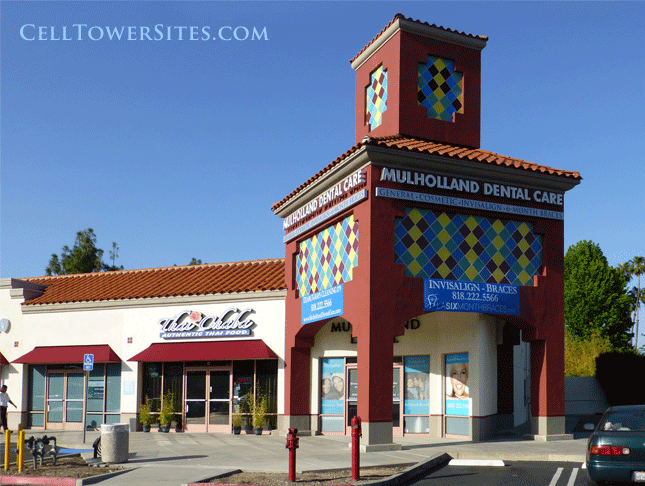
The net result of the new (D) language is that the camouflage benefit of the existing project (the before photo above) would be destroyed by AB 162 as currently amended.
Conclusions and Recommendations
AB 162 as proposed in March was a massive attack on local government authority to control wireless siting. As now amended in April, it is truly a wolf-in-sheep’s-clothing. The Bill now appears to provide benefits to local governments and the public, yet each of those benefits is either without value, or illusory. The wolf part is the inclusion of the “structure” element far-and-away exceeding the scope of the existing federal law.
This Bill, as now amended, is also far worse than the federal law, 47 U.S.C. § 1455(a), in the new privileges it would grant.
Ultimately, AB 162 is fatally flawed, inconsistent with federal law, and cannot be saved by amendments. It should be vigorously opposed by local governments and their constituents who are interested in remaining engaged in wireless siting matters in California.
Please feel free to share this analysis with interested local government parties and the public at large.
Continuing updates regarding AB 162 will be available at here at http://CellTowerSites.com. For now, and especially now, I continue to call this legislation the WIPE ACT (the Wireless Industry Public Exclusion Act).
Finally, please download a PDF of the bulk of this message and share it with your friends and elected officials: Please CLICK HERE.
Jonathan
[1] Note: The opinions contained in this communication are solely those of Jonathan L. Kramer, Esq., and do not necessarily reflect those of any client or friend of this firm. I’m pretty sure they don’t reflect the views of the wireless industry.

